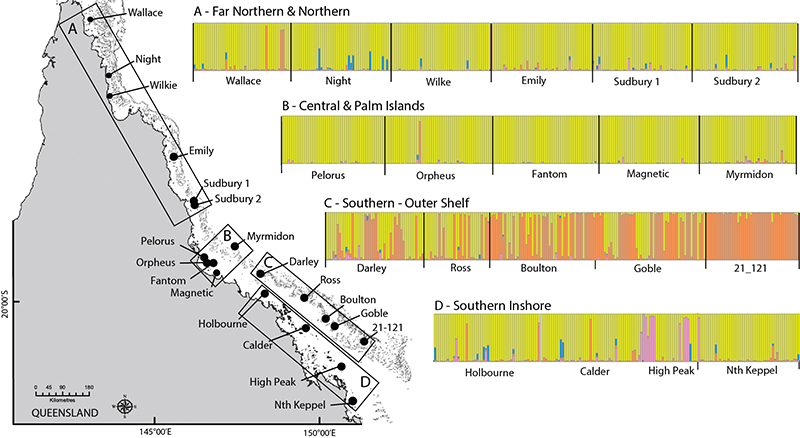Recent advances in coral population genetics are set to provide resource managers with crucial information to aid in more robust and refined delineation of marine protected area networks and reef restoration sites.
A joint study undertaken by scientists from the Australian Institute of Marine Science, ARC Centre of Excellence for Coral Reef Studies, the University of Melbourne and the University of Queensland delivers findings that can help reef managers look beyond protecting the life found inside existing conservation zones, by improving understanding of dispersal patterns of free-floating baby corals, known as “larvae”. Using advanced analytical tools for genetic data, scientists are now able to more accurately model the movement of the next generation of corals, enabling managers to extend protection to parent stocks of coral.
Advanced analytical tools enable scientists to identify the exchange of Acropora genes between reefs.
The research, recently published in Molecular Ecology, focuses on the gene flow of keystone genus Acropora – the most abundant of reef-building corals on the Great Barrier Reef. Patterns of dispersal based on genetic tests proposed in this study are suggested to be applicable to the diversity of coral species on the reef and therefore, are likely to improve informed rezoning and active management options, including the assisted translocation of more resilient corals.


